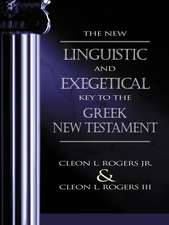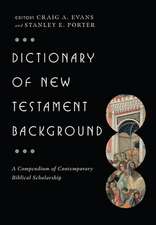Ur: The City of the Moon God: Archaeological Histories
Autor Harriet Crawforden Limba Engleză Paperback – 25 feb 2015
| Toate formatele și edițiile | Preț | Express |
|---|---|---|
| Paperback (1) | 170.95 lei 6-8 săpt. | |
| Bloomsbury Publishing – 25 feb 2015 | 170.95 lei 6-8 săpt. | |
| Hardback (1) | 654.45 lei 6-8 săpt. | |
| Bloomsbury Publishing – 25 feb 2015 | 654.45 lei 6-8 săpt. |
Preț: 170.95 lei
Preț vechi: 198.74 lei
-14% Nou
Puncte Express: 256
Preț estimativ în valută:
32.71€ • 34.24$ • 27.07£
32.71€ • 34.24$ • 27.07£
Carte tipărită la comandă
Livrare economică 05-19 aprilie
Preluare comenzi: 021 569.72.76
Specificații
ISBN-13: 9781472524195
ISBN-10: 1472524195
Pagini: 160
Ilustrații: 30 illus
Dimensiuni: 156 x 234 x 12 mm
Greutate: 0.27 kg
Editura: Bloomsbury Publishing
Colecția Bloomsbury Academic
Seria Archaeological Histories
Locul publicării:London, United Kingdom
ISBN-10: 1472524195
Pagini: 160
Ilustrații: 30 illus
Dimensiuni: 156 x 234 x 12 mm
Greutate: 0.27 kg
Editura: Bloomsbury Publishing
Colecția Bloomsbury Academic
Seria Archaeological Histories
Locul publicării:London, United Kingdom
Caracteristici
The Ancient Near East is a key growth area in archaeology and ancient history, and important for understanding much of western European culture
Notă biografică
Harriet Crawford is Senior Fellow at the McDonald Institute for Archaeological Research, University of Cambridge, and Reader Emerita at the Institute of Archaeology, University College London, UK. Her published works include Sumer and the Sumerians (2004), Dilmun and its Gulf Neighbours (1998) and The Sumerian World (2012). She has excavated in Iraq, Bahrain, Kuwait and Syria.
Cuprins
PrefaceChapter 1: The rediscovery of UrChapter 2: The earliest levels at UrChapter 3: The in-between times: Uruk and Jemdat NasrChapter 4: The rise of the city stateChapter 5: Art and technology: objects from the Royal cemeteryChapter 6: The defeat of the city state by the rulers of AkkadChapter 7: Imperial Ur: the public faceChapter 8: Ur beyond the sacred precinct: Ur III to Isin/Larsa (Early Old Babylonian) periodsChapter 9: Post-imperial Ur: Kassites to Neo-Babylonians Chapter 10: Death and rebirthBibliographyIndex
Recenzii
The site has a future, and this volume is a timely and succinct introduction to it.
This enjoyable book is accessible for those new to the subject, but informative enough for students of Mesopotamian archaeology.
Crawford presents an excellent book on the history of the city of Ur.
The remains of Ur in southern Iraq must rank among the most important archaeological sites in the world. Covering a period from the sixth millennium BC to the withdrawal of American troops following the Gulf War, Harriet Crawford provides a lively, authoritative and very welcome account of the excavations and the cultural and historical significance of one of the world's first cities.
This is a brisk and well-informed account of one of ancient Mesopotamia's most important early cities. Ur's wealth, global connections, and technological innovations are clearly described, and the challenges of the southern Mesopotamian environment are eloquently delineated. As well as writing a detailed biography of the extraordinary city of Ur, Dr Crawford gives us a quick history of archaeological discoveries and methods in South Iraq and an outline of Mesopotamia's cultural and historical developments, from the 6th through 1st millennium BC.
The ancient city of Ur and with it, the culture and history of early Mesopotamia come to life in Harriet Crawford's engaging and well-illustrated exploration of one of Iraq's most important archaeological sites.
In this well illustrated volume Dr Crawford brings back to life the city of Ur in south Iraq. She recounts the archaeological exploration of the site, principally on the part of Sir Leonard Woolley, whose excavation of the Royal Cemetery was one of the great discoveries of the early 20th century. Following the art and architecture of the citizens from prehistory down to the dynasty of Nebuchadnezzar, she gives a lively survey of this legendary political capital, enhanced by details from other cities. This is a readable and informative book and an excellent introduction to the civilization of Mesopotamia.
Archaeologist Crawford provides a well-written, popular account of what scholars have learned from excavations at the legendary ancient Mesopotamian city of Ur . Summing Up: Highly recommended. General, public, and undergraduate collections.
This enjoyable book is accessible for those new to the subject, but informative enough for students of Mesopotamian archaeology.
Crawford presents an excellent book on the history of the city of Ur.
The remains of Ur in southern Iraq must rank among the most important archaeological sites in the world. Covering a period from the sixth millennium BC to the withdrawal of American troops following the Gulf War, Harriet Crawford provides a lively, authoritative and very welcome account of the excavations and the cultural and historical significance of one of the world's first cities.
This is a brisk and well-informed account of one of ancient Mesopotamia's most important early cities. Ur's wealth, global connections, and technological innovations are clearly described, and the challenges of the southern Mesopotamian environment are eloquently delineated. As well as writing a detailed biography of the extraordinary city of Ur, Dr Crawford gives us a quick history of archaeological discoveries and methods in South Iraq and an outline of Mesopotamia's cultural and historical developments, from the 6th through 1st millennium BC.
The ancient city of Ur and with it, the culture and history of early Mesopotamia come to life in Harriet Crawford's engaging and well-illustrated exploration of one of Iraq's most important archaeological sites.
In this well illustrated volume Dr Crawford brings back to life the city of Ur in south Iraq. She recounts the archaeological exploration of the site, principally on the part of Sir Leonard Woolley, whose excavation of the Royal Cemetery was one of the great discoveries of the early 20th century. Following the art and architecture of the citizens from prehistory down to the dynasty of Nebuchadnezzar, she gives a lively survey of this legendary political capital, enhanced by details from other cities. This is a readable and informative book and an excellent introduction to the civilization of Mesopotamia.
Archaeologist Crawford provides a well-written, popular account of what scholars have learned from excavations at the legendary ancient Mesopotamian city of Ur . Summing Up: Highly recommended. General, public, and undergraduate collections.




















